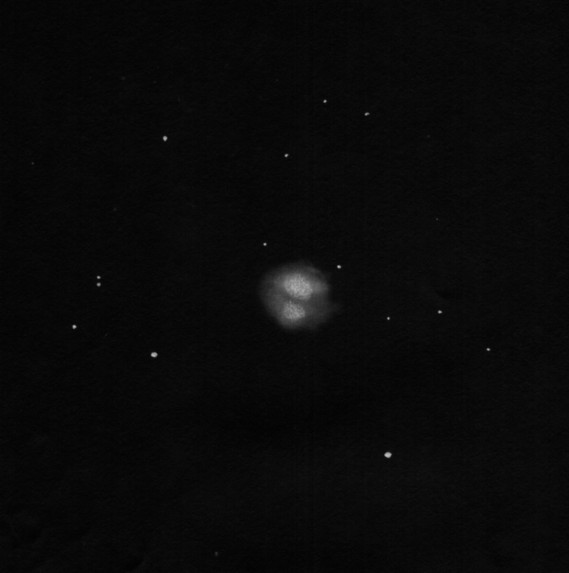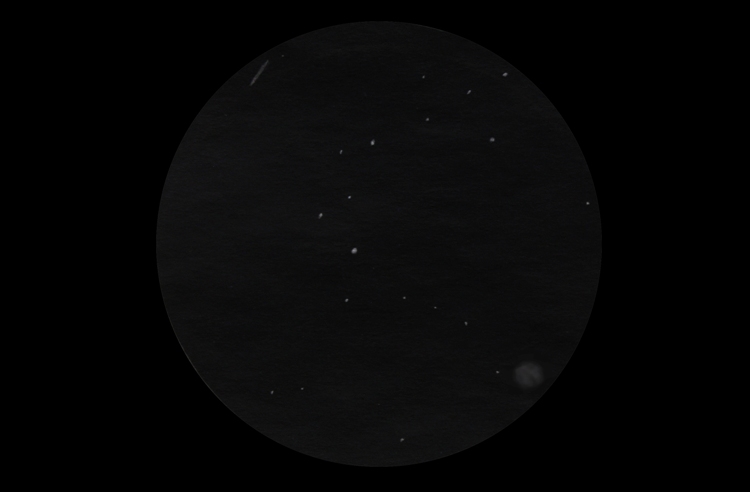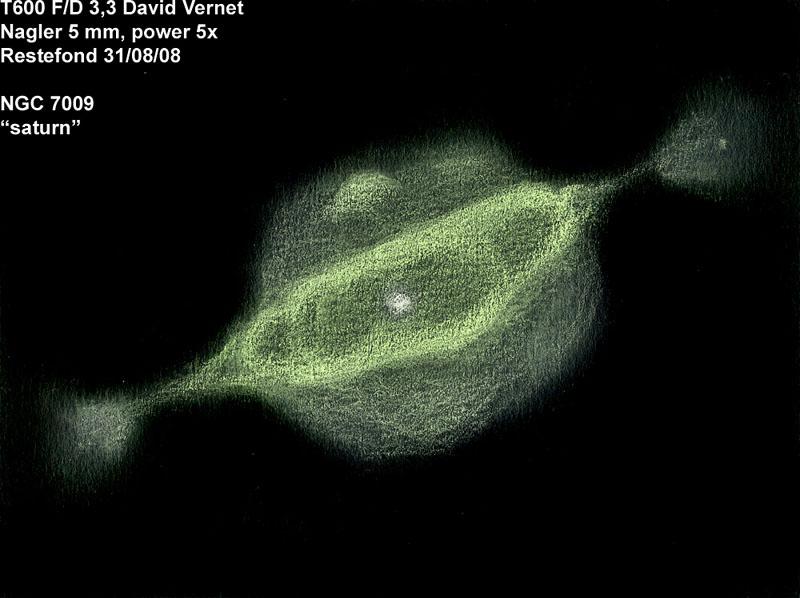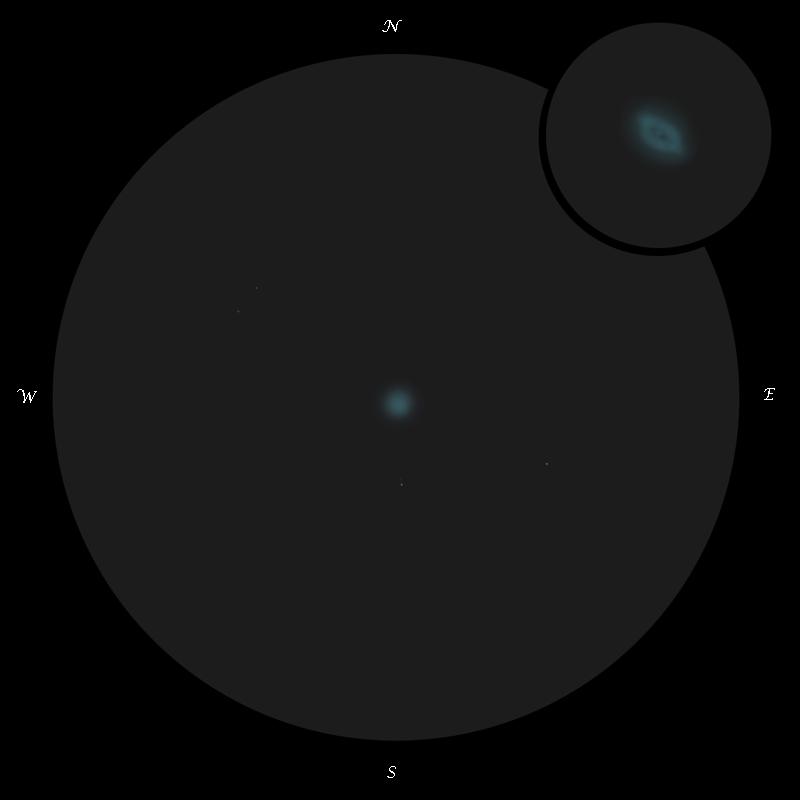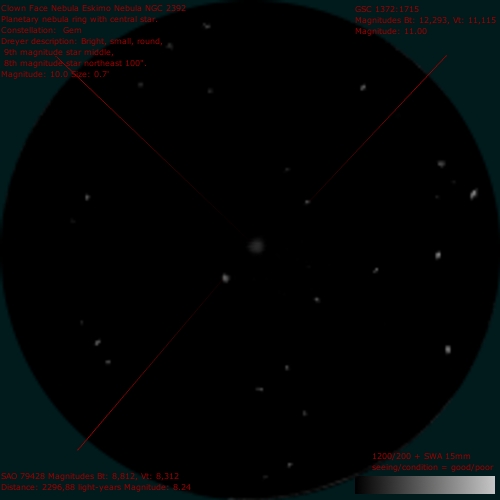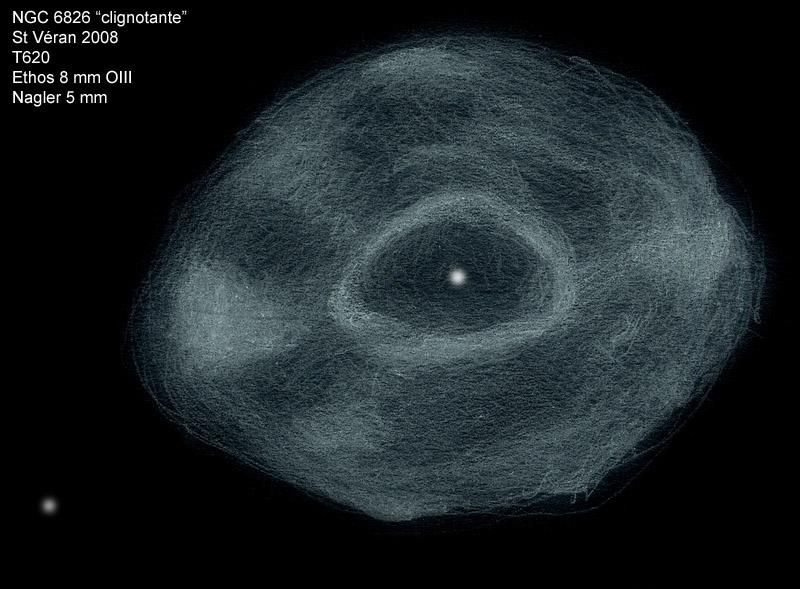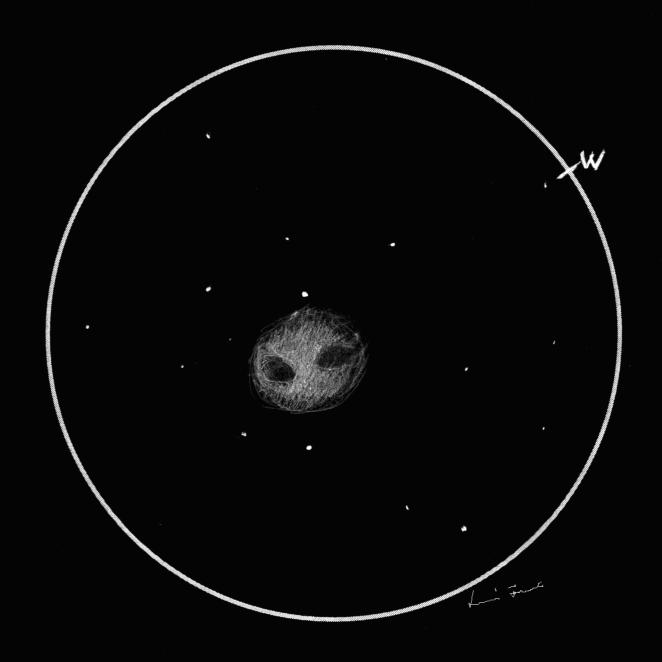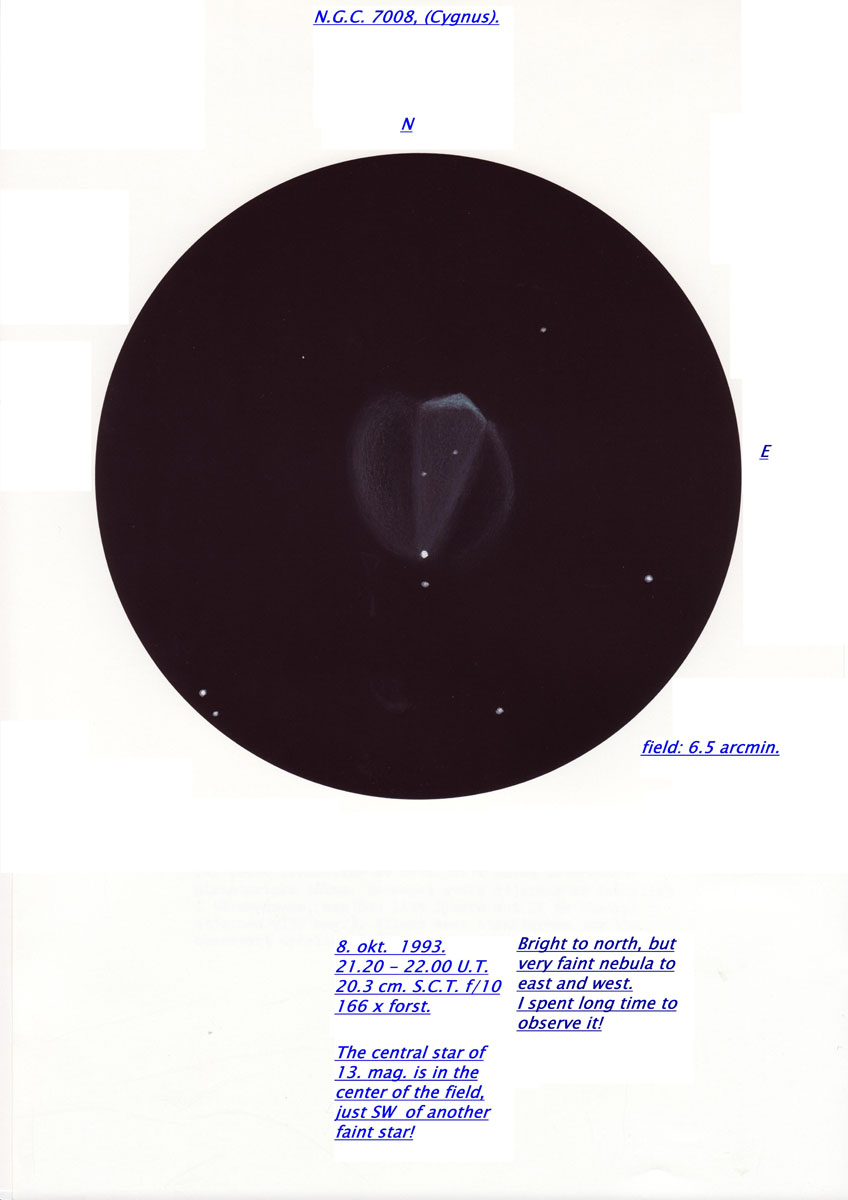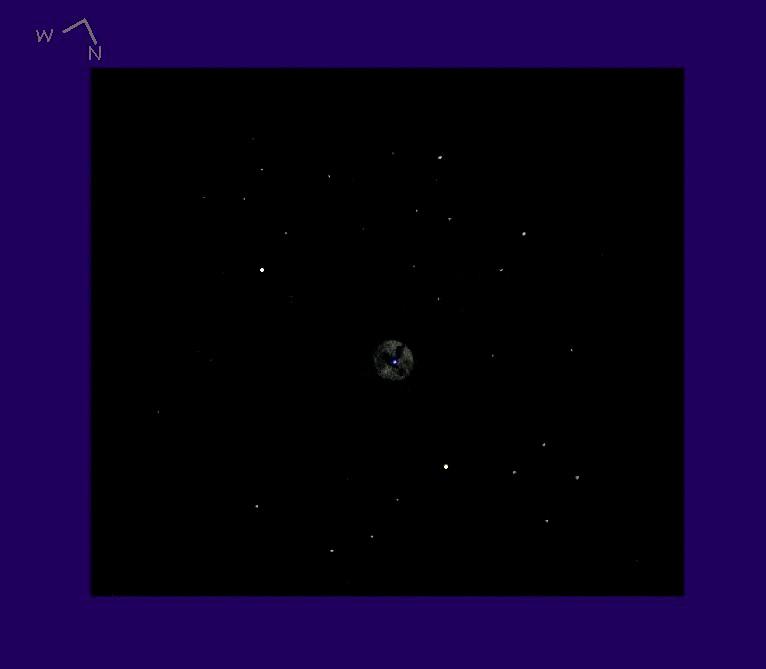
Planetary Nebula NGC 1514 in Taurus
Sketch and Details by Frank McCabe
Planetary Nebula NGC 1514
The last time I examined this planetary on a not so transparent night with my 10″ scope and using an ultrablock filter, I was disappointed with the view. Last night that all changed. Between nightfall and 3 am local time the seeing and transparency was about as good as it gets in these parts. I used my largest scope to take advantage of the good seeing and rare transparency. NGC 1514 is a double shelled planetary nebula in the constellation of Taurus. The outer faint shell was not at all visible at the eyepiece. The brighter irregularly illuminated inner shell which is about 1.9′ across was easy and much enhanced by the filter and averted vision. The bright central star was clearly blue and is classified as a late O-type star. This star is believed to be a close, short period binary with an A-III type companion. The apparent magnitude of the central star is 9.5. This planetary was discovered by William Herschel 218 years ago this month.
Location: R.A. 4 hrs 9 min. 17 sec.
Dec. + 30° 46′ 33″
Sketching
Date and Time: 11-29-2008, 4:15-5:20 UT
Scope: 18” f/5 Dobsonian. 21 mm Hyperion eyepiece 109x, ultrablock filter,
8”x11” off-white recycled sketching paper, 2H, 2B, 6B graphite pencils, yellow crayola sketching pencils, blending stump, eraser shield, scanned and inverted, some star magnitude adjustments and background made after scanning using Microsoft Paint.
Temperature: -3°C (26°F), calm
Seeing: Pickering 8/10
Transparency: Above Average 4.5/5
nelm: 4.8
